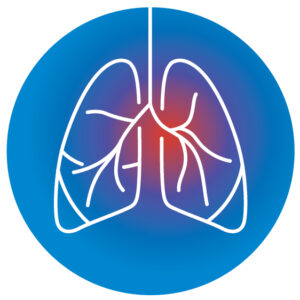
Breathing Easier with Timely Bronchiectasis Care
Have you been coughing every day for months — or even years? Is your cough often accompanied by mucus or blood? Do you experience shortness of breath or wheezing? Is it accompanied by chest pain? Has the skin under your fingernails gotten thicker, causing your fingernails and toenails to curve downward?
If you’re experiencing any of these symptoms, you may be suffering from a lung condition called bronchiectasis.
In honor of World Bronchiectasis Day (July 1), let’s take a closer look at this relatively rare but serious — and growing — disease.
What Is Bronchiectasis?
Bronchiectasis is a lung disease that affects hundreds of thousands of people worldwide. It occurs when the airways become enlarged or scarred, preventing mucus from being cleared properly. When this happens, bacteria can grow, leading to recurring lung infections, which can do increasing damage to your airways. Eventually, those tubes will lose their ability to move air in and out, making it more and more difficult for enough oxygen to reach your vital organs. This can lead to additional health problems, including a collapsed lung, respiratory failure, or even heart failure.
While the disease can occur at any age and most people are diagnosed later in life, the initial airway damage that leads to bronchiectasis often happens during childhood.
Two-thirds of those with the condition are women, but bronchiectasis can develop at any age, and, in children, the condition is more common in boys than in girls.
Causes and Detection
Before the rise of vaccines and antibiotics, many cases of bronchiectasis were caused by childhood infections like measles and whooping cough. Today, the disease is more typically caused by conditions like cystic fibrosis and primary ciliary dyskinesia. While there is currently no cure for bronchiectasis, early detection and treatment can improve the quality of life of those affected.
If you have a daily cough that produces a lot of sputum (or spit), your doctor may recommend tests to determine whether you have bronchiectasis.
These diagnostic tests and procedures — which can include a chest computed tomography (CT) scan, chest X-ray, blood test, lung function test, sputum culture, and more — will help:
- Rule out other causes of your symptoms
- Find any underlying causes that require treatment
- Determine how much of your airways are damaged
Treatment Options
If you are diagnosed with bronchiectasis, your doctor will pursue various treatments to address any underlying conditions and lung infections, remove mucus from your lungs, and prevent complications. And while there is no cure for the condition, treatment may help prevent further lung damage.
Treatments can include:
- Good hydration to help keep airway mucus moist and slippery and easier to cough up • Antibiotics to treat repeated lung infections
- Expectorants and mucus-thinning medicines to help you cough up mucus • Bronchodilators relax the muscles around your airways
- Chest physical therapy (CPT), which involves a respiratory therapist or family member using their hands or a device to pat or gently pound your check and back repeatedly to loosen mucus from your lungs
If the disease is widespread and causing respiratory failure, your doctor may also recommend oxygen therapy.
If it’s isolated to a particular section of the lung — or if you’re having excessive bleeding — your doctor may recommend surgery.
Timely bronchiectasis diagnosis and treatment can improve your quality of life — and perhaps even extend it. If you think you might be suffering from this condition, please call at (423) 710-3864 or click here to make an appointment.
Sources: American Lung Association, National Institutes of Health
We are here to Help You Breathe Better Again – The Lung Docs









